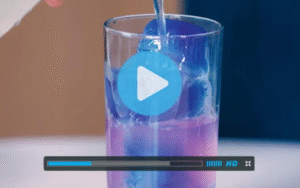In today’s world, more and more people are rethinking how they approach health and healing. While modern medicine offers life-saving treatments, advanced diagnostics, and scientifically proven methods, natural therapies bring holistic balance, fewer side effects, and a focus on overall well-being. Instead of choosing one over the other, many individuals are discovering that combining modern medicine and natural therapies creates the best results for long-term health.
This integrative approach acknowledges that the human body is complex and healing is not always about suppressing symptoms but addressing the root cause, restoring balance, and supporting overall vitality. Let’s dive deep into how modern medicine and natural therapies can work together and why this synergy might be the future of healthcare.
The Power of Modern Medicine
Modern medicine has revolutionized the way we treat illness and manage health. Some of its biggest strengths include:
- Advanced Diagnostics: From blood tests to MRI scans, technology allows for early detection of diseases that were once life-threatening.
- Life-Saving Treatments: Antibiotics, vaccines, and surgeries have dramatically increased life expectancy worldwide.
- Evidence-Based Practices: Modern medicine relies on research, clinical trials, and scientific data to guide treatment decisions.
- Emergency Care: In critical conditions such as heart attacks, strokes, or accidents, conventional medicine is often the only reliable option.
Despite its remarkable progress, modern medicine is not without limitations. Side effects from medications, over-reliance on pharmaceuticals, and a tendency to treat symptoms rather than root causes are among the common concerns.
The Role of Natural Therapies
Natural therapies, also known as complementary or alternative medicine (CAM), focus on the body’s innate ability to heal itself. They include a wide range of practices such as:
- Acupuncture: Stimulating specific points on the body to restore energy flow and relieve pain.
- Herbal Medicine: Using plants and natural extracts for healing and prevention.
- Yoga and Meditation: Supporting mental health, reducing stress, and improving physical flexibility.
- Nutritional Therapy: Encouraging whole, nutrient-rich foods to support immunity and overall wellness.
- Chiropractic and Massage Therapy: Relieving tension, improving circulation, and supporting musculoskeletal health.
Natural therapies emphasize prevention, balance, and long-term wellness. They often work best for chronic conditions, stress management, and lifestyle-related health issues. However, they can sometimes lack the rigorous scientific validation that modern medicine demands, leading to skepticism among healthcare professionals.
Why Combining the Two Approaches Works Best
When used together thoughtfully, modern medicine and natural therapies complement one another. This synergy offers:
1. Holistic Care
Modern medicine targets disease management, while natural therapies focus on prevention and overall wellness. Together, they create a more complete healthcare plan.
2. Reduced Side Effects
For patients undergoing treatments like chemotherapy or long-term medication, natural therapies such as acupuncture, massage, or nutrition support can help minimize side effects.
3. Personalized Healing
Not all patients respond the same way to treatments. Combining both approaches allows doctors and practitioners to tailor a plan that fits an individual’s needs.
4. Improved Mental Health
Stress and anxiety can worsen many medical conditions. Meditation, yoga, or mindfulness practices alongside medical treatment support emotional resilience and faster recovery.
5. Better Long-Term Outcomes
While modern medicine often provides quick solutions, natural therapies encourage lifestyle changes that prevent future health problems. Together, they provide both immediate and lasting results.
Examples of Integrative Healthcare in Action
Many clinics and hospitals around the world are adopting integrative healthcare models. Some examples include:
- Cancer Care: Patients may receive chemotherapy alongside acupuncture, meditation, and nutritional guidance to reduce side effects and boost quality of life.
- Chronic Pain Management: Prescription medications may be paired with physical therapy, yoga, and massage to reduce reliance on opioids.
- Cardiovascular Health: Doctors may prescribe blood pressure medications while also recommending dietary changes, exercise, and stress reduction techniques.
- Mental Health Treatment: Therapy and medication for depression or anxiety can be enhanced with mindfulness practices, herbal supplements, and lifestyle adjustments.
These examples show how blending the two approaches often leads to better patient satisfaction and improved results.
Overcoming the Skepticism
Some people hesitate to combine modern medicine with natural therapies due to skepticism or misinformation. The key is understanding that integrative care does not mean replacing one system with the other. Instead, it’s about collaboration and balance. Patients should always communicate openly with their healthcare providers about any supplements, herbs, or alternative treatments they are considering to avoid harmful interactions.
Healthcare professionals are also increasingly open to integrative approaches as more studies highlight the benefits of combining treatment methods.
Tips for Successfully Combining Modern Medicine and Natural Therapies
If you are considering this integrative path, here are a few important tips:
- Consult Your Doctor First: Never stop prescribed treatments without medical guidance.
- Work With Licensed Practitioners: Ensure your acupuncturist, herbalist, or therapist is certified and experienced.
- Be Transparent: Inform your doctor about any herbs, supplements, or alternative practices you use.
- Start Small: Introduce one natural therapy at a time so you can monitor how your body responds.
- Focus on Lifestyle: Combine treatments with healthy habits such as regular exercise, proper sleep, and a balanced diet.
The Future of Integrative Healthcare
The growing popularity of wellness clinics, holistic hospitals, and preventive care programs suggests that integrative healthcare is here to stay. As research continues to validate the benefits of combining modern medicine and natural therapies, more patients and healthcare providers will embrace this balanced approach.
This model of healthcare doesn’t just treat disease—it empowers individuals to live healthier, more balanced lives. It acknowledges that medicine is not one-size-fits-all and that true healing comes from addressing both the body and the mind.
Final Thoughts
Combining modern medicine and natural therapies offers the best of both worlds. Modern medicine provides advanced, evidence-based solutions for acute conditions, while natural therapies enhance well-being, reduce side effects, and support long-term health.
Instead of choosing one path, consider how both can work together to create a personalized plan for optimal health. By embracing integrative healthcare, you can enjoy not only relief from illness but also improved energy, balance, and vitality for years to come.
>>> Backyard weed fixes enlarged prostate & provides complete relief



